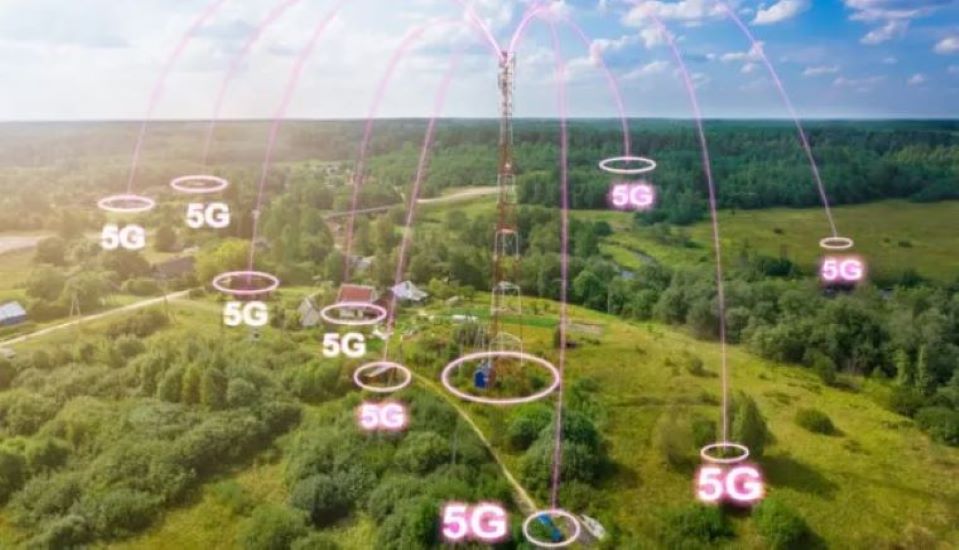
The News: Samsung Electronics America announced it has been selected by Mediacom Communications, one of the largest cable operators in the U.S., for the deployment of Citizens Broadband Radio Service (CBRS) wireless network solutions in hard-to-reach rural communities across the U.S. By leveraging Samsung’s wireless network technology, Mediacom seeks to widen the reach of its high-speed Internet service to underserved or remote areas of the country through Fixed Wireless Access (FWA). Read the Samsung Press Release here.
Samsung Raises 5G FWA Profile with Mediacom Cable Win
Analyst Take: Samsung’s FWA win with Mediacom attests to the vibrancy of the evolving 5G ecosystem in different ways. For starters, the new deal reminds the market that Samsung is a significant and credible 5G network supplier, including RAN technologies such as vRAN and O-RAN, augmenting the company’s already well-established strong suit in mobile devices, especially smartphones.
The deal also highlights the key role CBRS, a mid-band spectrum form 3.5 GHz to 3.7 GHz, is slated to play in broadening 5G FWA deployments particularly across rural areas. I see CBRS injecting new wireless capabilities throughout 5G deployments such as network-scheduled client access, interference-resistant qualities, nonstop roaming, and up to tenfold greater coverage indoors and outdoors aligned with power management flexibility and always-on data encryption.
As a result, Mediacom has locked in 576 CBRS licenses in the Priority Access License auction that covered 178 counties across its existing cable footprint. With these licenses, I expect that Mediacom can now streamline and accelerate deployment of fiber and wired connectivity to areas that were previously rendered non-addressable on an economic basis. Mediacom will use Samsung’s already tested CBRS 4G/5G RAN solutions to build FWA services, beginning during autumn, that can help decrease the digital divide in mostly hard to reach rural areas.
Samsung is further demonstrating its commitment to the O-RAN market with the Mediacom deal, bolstering the vRAN deployments it already delivers with major operators in North America, Europe, and Asia-Pacific. Samsung already has high-profile 5G network deals with Verizon, DISH, and Orange including RAN technology. Samsung and DISH for instance are working together to deploy Samsung’s O-RAN compliant vRAN solutions and radio units, playing an integral role in DISH’s nationwide 5G services deployment. Orange selected Samsung due to considerations such as Samsung’s vRAN solutions ability to support both low and mid-band spectrums as well as meeting indoor and outdoor environment requirements. In Asia-Pacific, KDDI (Japan) is using Samsung’s cloud-native vRAN solutions across the mid-band spectrum of its 5G network service deployment.
I view Samsung’s multi-regional progress with commercial vRAN deployments as reaffirming it is a robust competitive alternative to traditional RAN stalwarts Ericsson, Nokia, Huawei, and ZTE as well as emerging Open RAN dedicated suppliers such as Rakuten Symphony and Mavenir. Samsung is fulfilling a pressing competitive priority of mobile operators by providing a competitive counterweight to Ericsson and Nokia in many major non-China markets while Open RAN continues to be subjected to extensive testing and tire kicking before readiness for mass scale commercial deployments.
From my view, Mediacom’s 5G FWA deployment shows that cable operators can also use 5G to fulfill their strategic broadband coverage objectives. While telco 5G services, especially 5G FWA, are often pitted as a potential competitive threat to traditional cable modem services, Mediacom is validating that cable operators are certainly capable of deploying 5G FWA as well as fiber services to augment their established broadband cable and cable TV deployments and revenue streams.
CableLabs, AT&T, and DISH, for example, are collaborating to advance O-RAN Alliance testing and interoperability initiatives in North America. The trio is now engaged in using the CableLabs Kyrio O-RAN Test and Integration Lab (OTIC) to spur O-RAN adoption across the Americas. The bottom line is that cable operators will use the broadband connectivity technology and capabilities that are best suited to meet their strategic business and society-wide goals, such as deploying 5G FWA, to reduce the digital divide across rural areas.
I believe the Samsung Mediacom deal puts the spotlight on three key 5G market developments encompassing cable operator willingness to use 5G FWA as an integral part of their overall broadband deployment strategies, Samsung as a bona fide supplier of 5G network technology including 5G FWA and vRAN/O-RAN solutions, and the inherent value of CBRS spectrum in addressing digital divide shortfalls especially throughout rural areas.
Disclosure: Futurum Research is a research and advisory firm that engages or has engaged in research, analysis, and advisory services with many technology companies, including those mentioned in this article. The author does not hold any equity positions with any company mentioned in this article.
Analysis and opinions expressed herein are specific to the analyst individually and data and other information that might have been provided for validation, not those of Futurum Research as a whole.
Other insights from Futurum Research:
NEC Aspires to Accelerate Open RAN 5G Integration
T-Mobile and Cradlepoint Aim to Streamline Business Adoption of 5G FWA
Image Credit: RCR Wireless News
The original version of this article was first published on Futurum Research.
Ron is an experienced research expert and analyst, with over 20 years of experience in the digital and IT transformation markets. He is a recognized authority at tracking the evolution of and identifying the key disruptive trends within the service enablement ecosystem, including software and services, infrastructure, 5G/IoT, AI/analytics, security, cloud computing, revenue management, and regulatory issues.


